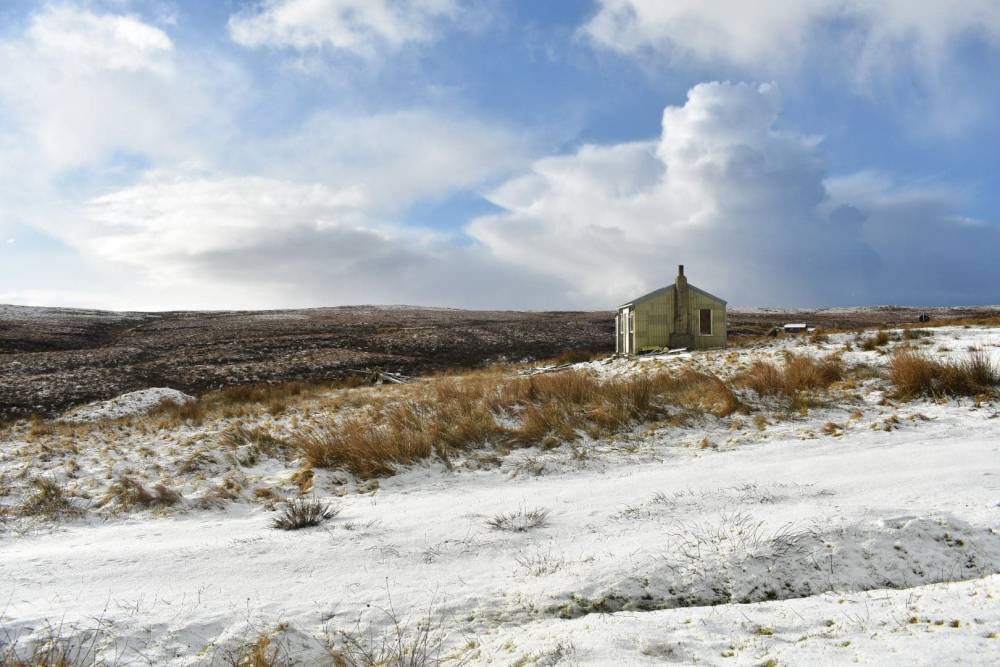Life in a post-war shieling
© Jasmine Montgomery Wilkie
Life in a post-war shieling
"It was always a happy experience to visit a shieling. I never met anyone that didn’t enjoy spending some time in one.
The traditional Breanish shielings were on the distant grazing grounds along the Fidigidh river. Post-war shielings were built on moorland closer to the village and were all of a pretty similar style. The interior wall was lined with sacking material (used in bags for wool) which was attached with wooden dooks and strong flour-based paste, then it was all papered over and painted in the usual way. The bed was about 7 feet square and low down on the floor. It had a heather mattress covered with strong waterproof canvas material. There were storage cupboards and shelving along the walls for storing the milk and utensils. A full width curtain across the front of the bed for privacy also marked the division between the sleeping and kitchen areas. A full-length seating bench (beinge) was placed in front of the curtain, this was the ‘beinge’ for the kitchen. The kitchen would have all that was needed for cooking, with an open fire at the chimney end. Some of the heavy appliances were stored outdoors, including water pails, wash tubs, basins, firewood and peats. Everything was kept in a very orderly way.
In those days people just listened to the news and turned the radio off again to save the battery and of course there was no TV. People made their own entertainment and didn’t bother about anything else. They passed their time out in the àirigh (shieling) knitting, reading, story-telling, making butter and cheese, cooking, cutting peats for the following year, fishing and visiting other àirighs. Just like at their homes they said the ‘books’ morning and evening and they’d gather the cattle back at the end of the day.
As told by Iain Mhurchaidh to the Uig Historical Society
More information on visiting the area can be found here.
